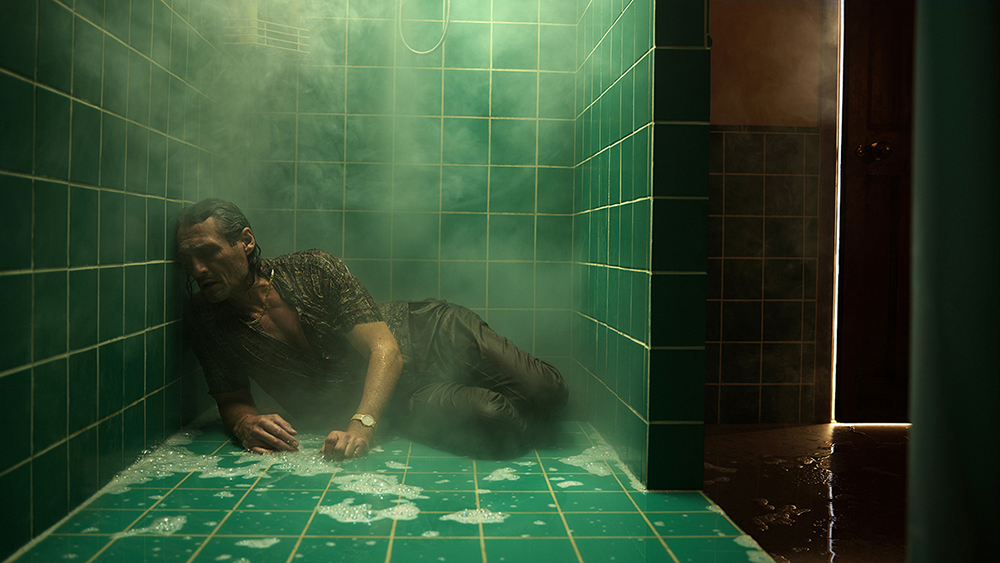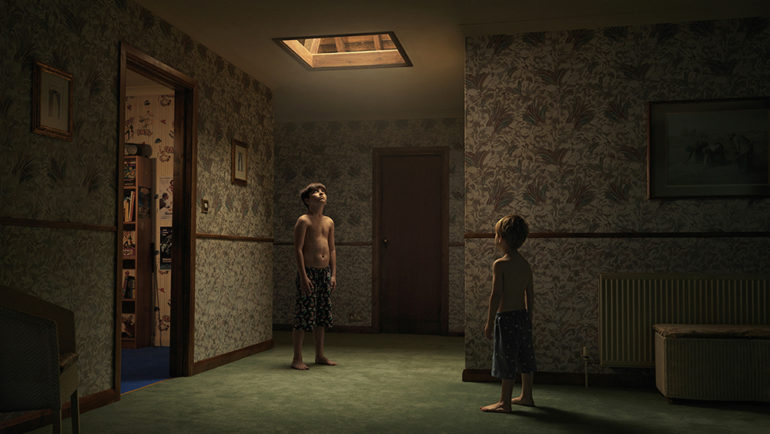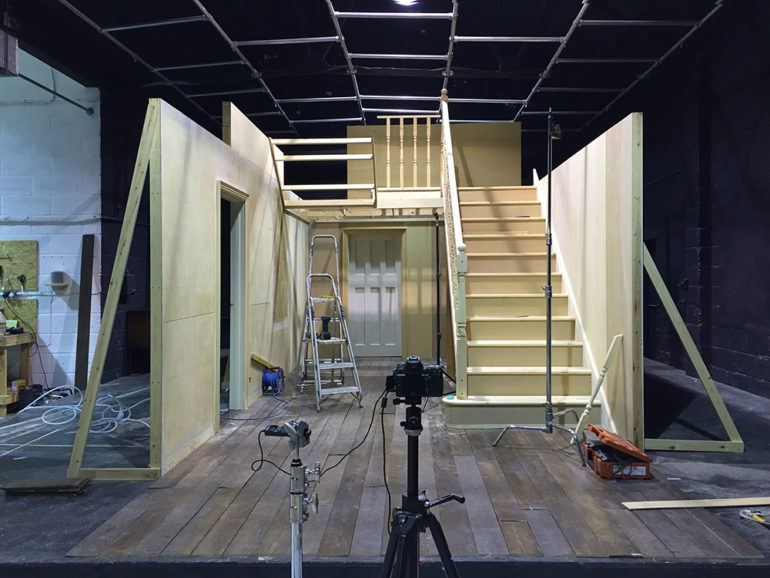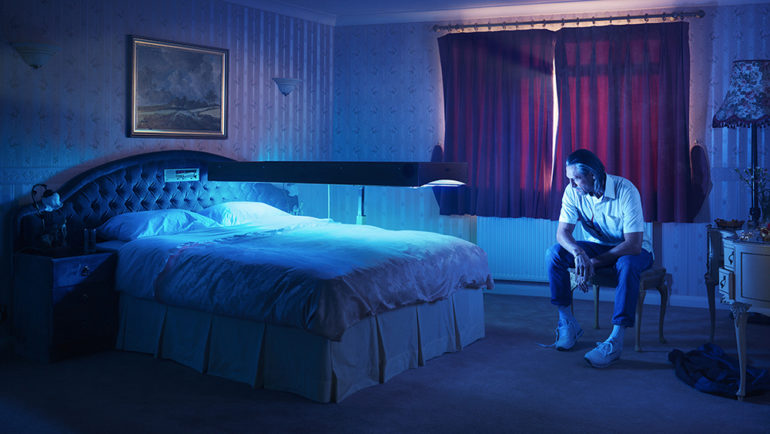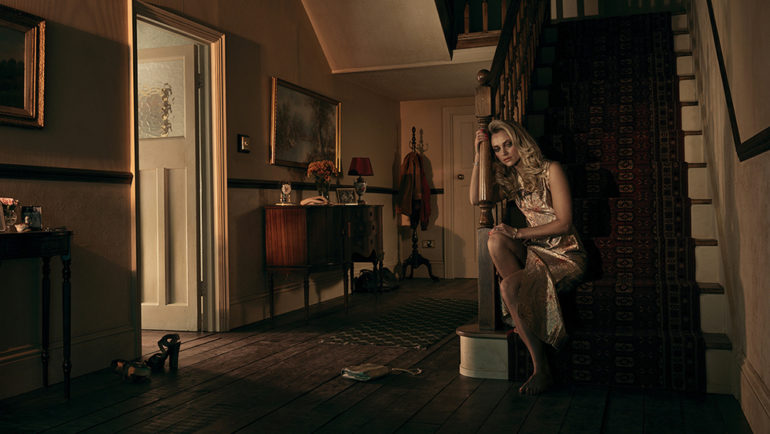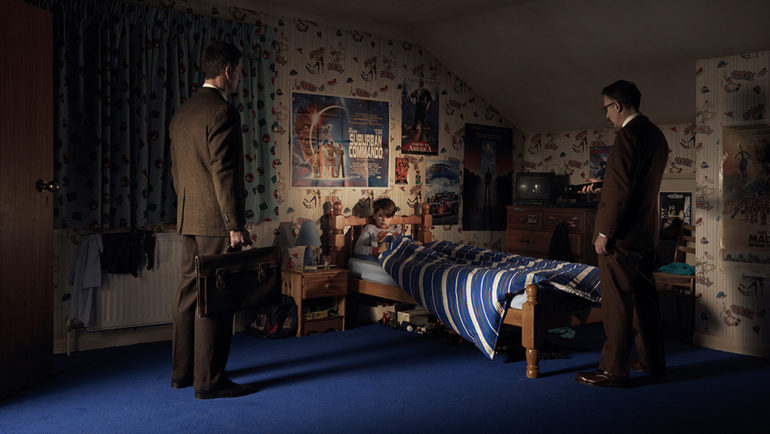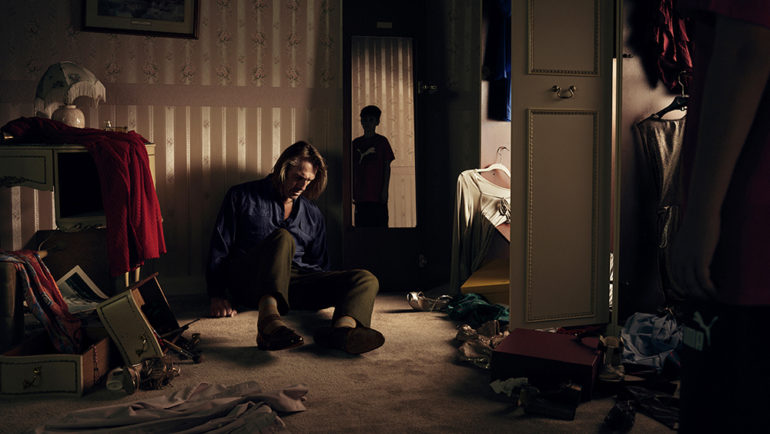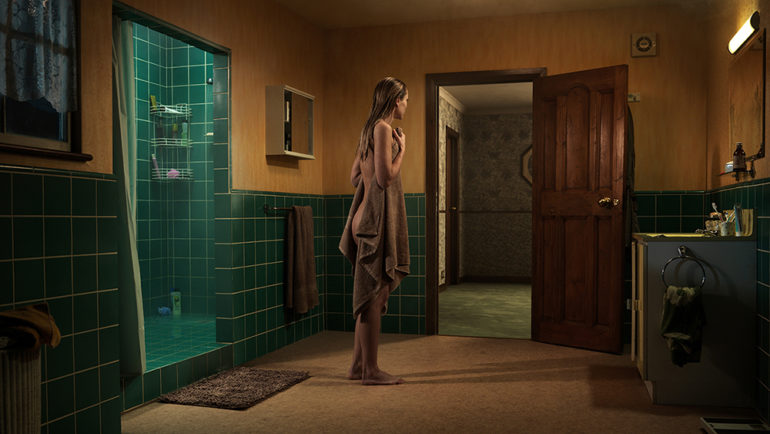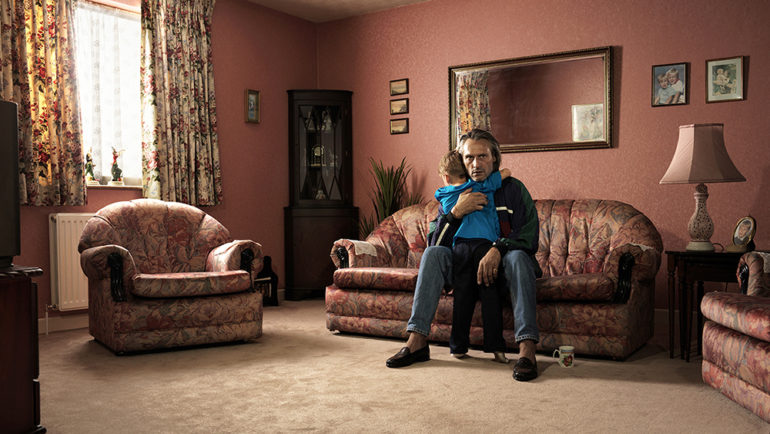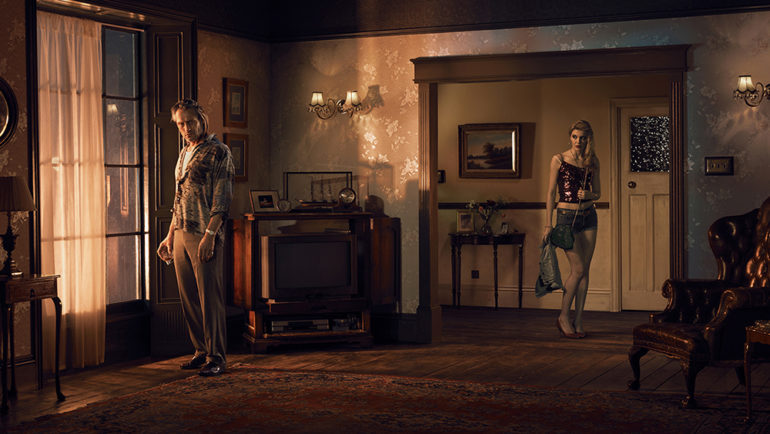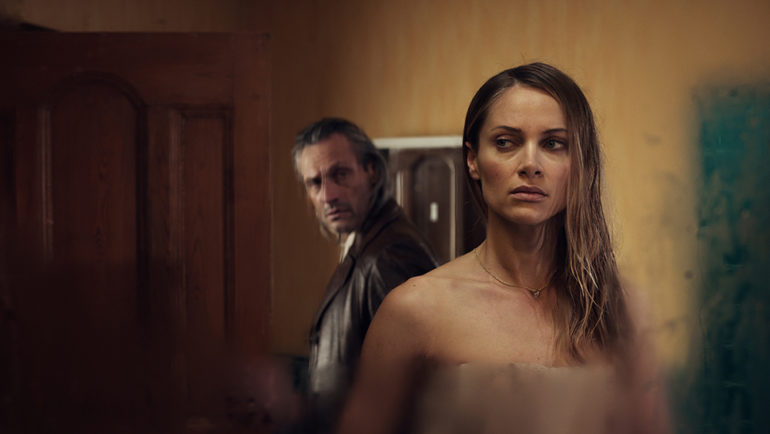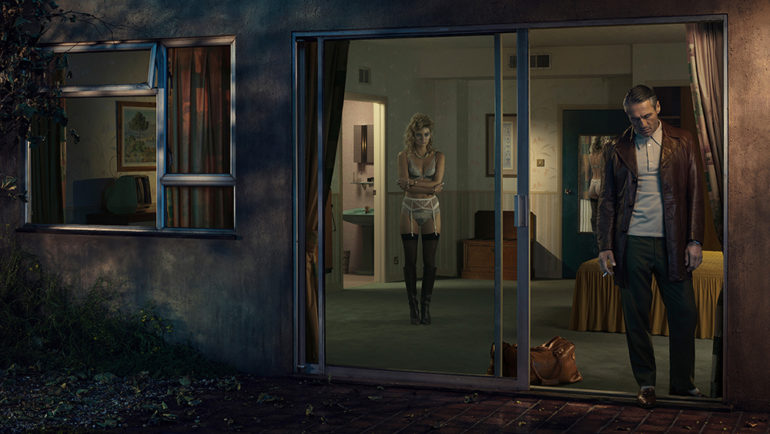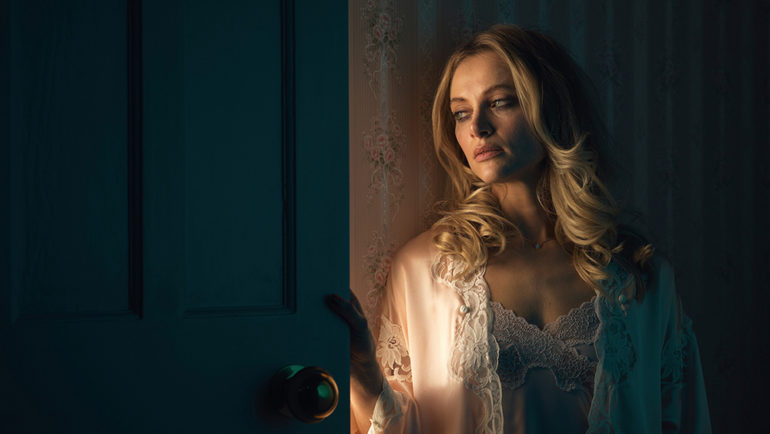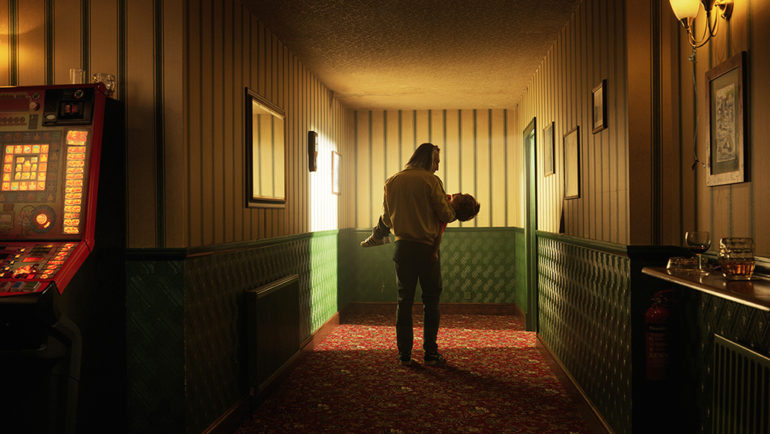All images by Nicky Hamilton. Used with permission.
Many creatives and photographers have always had an interesting relationship with at least one parent; and Nicky Hamilton’s “The Lonely Man” explores that just a bit. Nicky calls it a fine art photography project–and it isn’t only that in terms of its substance, but in terms of its creation as well. In fact, Nicky himself built each set by hand and each photo took around three months to finish. If that isn’t dedication to your craft, I’m honestly not sure what is.
Nicky himself was born in 1982, and he’s the former Head of Art at the ad agency M&C Saatchi. He describes his methods as being filmic in that he puts a lot of work into set design, details and narrative. His work explores characters’ emotional states by playing with performance and symbolism in order to produce deeply evocative moods. Think of it as being a character driven story with a bit of story drive added into the mix. To that end, Nicky also uses continuous lights and sometimes even shoots with film.
Be sure to follow Nicky on Instagram.
Artist Statement – The Lonely Man
“They fuck you up, your mum and dad. They may not mean to, but they do.” – This Be The Verse by Philip Larkin. The Lonely Man is a deeply personal project. The thirteen piece tableau explores my childhood relationship with my father, a relationship that was conducted through “a maze of police raids, guns, drugs, violence and, ultimately, redemption” after he was declared bankrupt in the 1980s.
In the early years my Dad started out as a builder. Things were simple, holidays where plenty and so was the laughter. In the mid 80s my Dad lost his business in a freak incident and had to declare himself bankrupt, post a recent purchase of a dream home he could no longer afford. Maggie Thatcher’s reign had taken hold, the economy was weak and so was my Dad’s judgement. He turned to crime and crime turned him into a drug addict who would one day call his son and ask me to prevent him from committing suicide
Why did you get into photography?
I was Head of Art for advertising agency M&C Saatchi where I worked with a lot of great photographers and cinematographers. I feel in love with the art of capturing a moment.
What photographers are your biggest influences?
It’s a very long list but first to mind are Alex Prager, Craig McDean, Steven Klein, Steven Meisel, Roger Deakins, Emmanuel Lubezki, Vilmos Zsigmond and of course Gregory Crewdson.
How long have you been shooting?
8 Years ago I left the advertising world to become a photographer.
Why is photography and shooting so important to you?
It’s a visual language which speaks not in words but in emotions, it’s my expression of how I see the world.
Do you feel that you’re more of a creator or a documenter? Why?
My projects tend to birth from my own life experiences so I guess you could say I’m a documenter who ‘creates’ moments.
What’s typically going through your mind when you create images? Tell us about your processes both mentally and mechanically?
I’m always taking notes on interesting social commentary and past experiences. Once I have a silver thread for a project I start to create the characters, sets and styling which all blends into a feeling which reflects the style and mood of the shot. I build sets for all my work as I have a very specific vision of the picture as a whole.
It takes around 3 months to produce one picture. First I create the concept as a sketch, this I then transfer into a 3D pre visual where I pre light and test colour palettes. Next I would build the set, followed by set dressing and styling which usually takes around 6 weeks. The next stage is pre lighting the set often taking around 5 days, I experiment with styles trying to get the balance of atheistic and mood right for the concept. Lastly I shoot the picture, allowing a full day for characters and different exposure plates and then finally it’s post production. I often leave this task for a few weeks as I can feel too close to the idea and like to refresh my point of view before final selects.
Want to walk us through your processing techniques?
Processing is fairly minimal, I shoot multiple exposures for details which I blend together and then grade, I tend to not retouch too much preferring to correct things in camera.
Tell us about the project that you’re pitching, or your portfolio.
I’ve always been a very visual person. I’ll watch a film, pausing ever so often to take in a moment, staring wondrously at what’s stirred the emotions. I think it’s a talent that I’ve accumulated through my childhood, a dramatic event would happen, it would be ignored by my parents and I was left to ponder. Creating my own narrative, letting the anxiety build until a tic or some mild form of OCD would appear. “Stop that Nicky, why are you clicking your neck” my Mum would say. I was reliving the moment my Dad drove his car though the neighbours living room in a drunken mess escaping the police. The click was me suppressing the fear, it was my trigger.
In my early years my Dad started out as a builder. Things were simple, holidays where plenty and so was the laughter. In the mid 80s my Dad lost his business in a freak incident and had to declare himself bankrupt, post a recent purchase of a dream home he could no longer afford. Maggie Thatcher’s reign had taken hold, the economy was weak and so was my Dad’s judgement. He turned to crime and crime turned him into a drug addict who would one day call his son and ask me to prevent him from committing suicide
I know this story would demand a lot of time and effort to convey the emotions felt so 4 years ago I opened my own studio and have since dedicated my time to this series and my style of creating images.
What made you want to get into your genre?
I think that working in advertising and being exposed to so much photography made me numb to the mainstream styles. I wanted to create pictures which hold a greater meaning of both subject and craft.
Tell us a bit about the gear that you use and how you feel it helps you achieve your creative vision
I shoot with continuous lighting for a more cinematic and natural feel. I use either a digital medium format Hasselblad H4D60 or a Hasselblad 500 C/M with a film back and usually only shoot on either a 50mm or a 80mm lens.
What motivates you to shoot?
The idea. Once I can visualise a picture it’s extremely energising. The hardest part for me to committing to a project and working out all the details. Working up to the point of shooting can be mentally exhausting which is such a climactic day.


